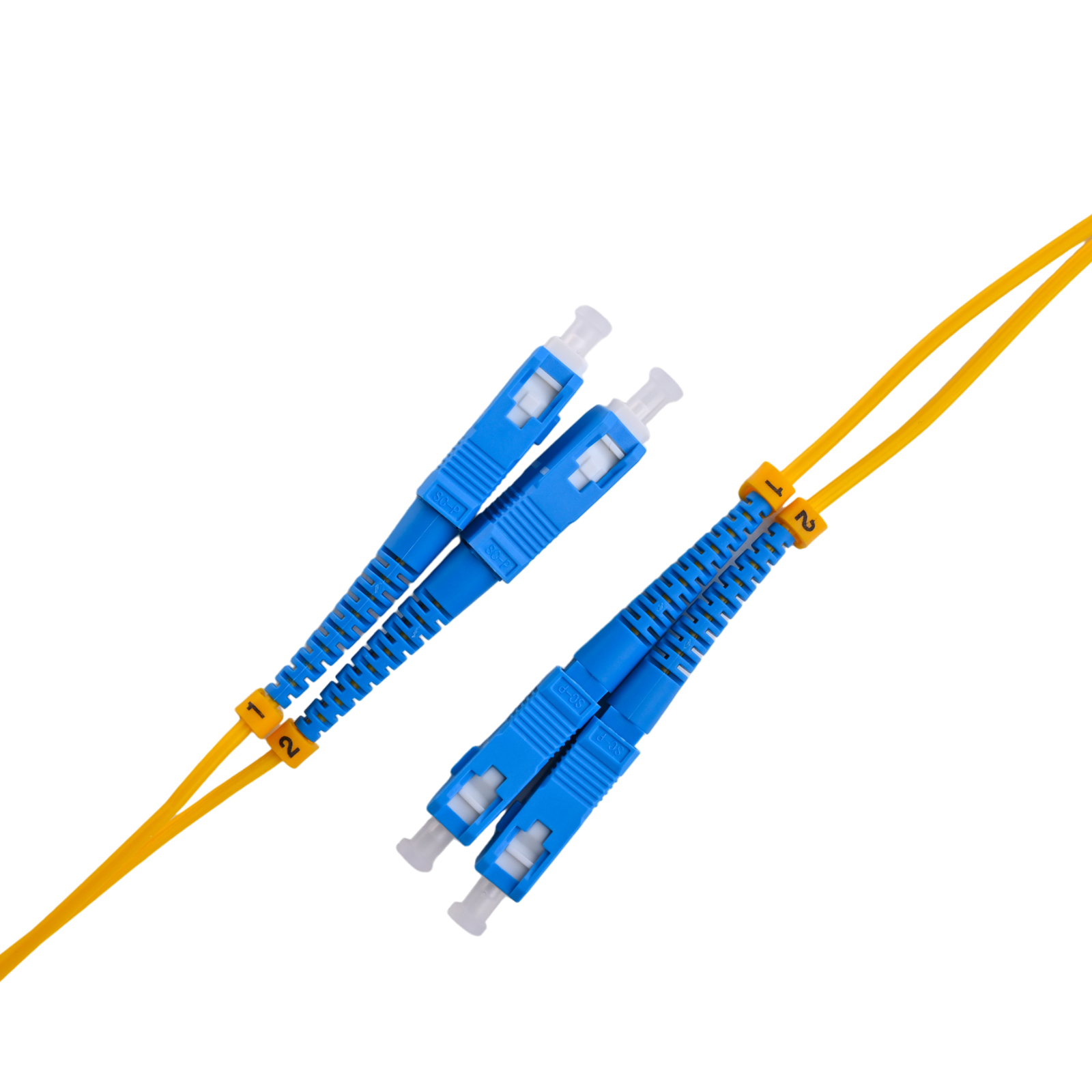Description
Patchcord SC/UPC – SC/UPC Singlemode OS2 9/125 G675A1 Duplex Zip 2.0mm OFNR Yellow
Shaxon’s SC/UPC – SC/UPC 9/125 OS2 patch cords feature a rugged yellow 2.0.mm duplex zip cord jacket and high quality SC/UPC connectors. Polarity is clearly marked with yellow polarity labels. SC connectors are shipped unclipped but do include the clip to be applied in the field if desired.
The SC is a snap-in connector which also features a 2.5mm ferrule much like the ST connector and is known for its excellent performance. The connector is simple, rugged, and low cost. Its simple push on/pull off operations makes it a popular choice.G675A1 bending insensitive single-mode fiber encompasses all the features and provides good resistance to macro-bending. It has low macro-bending sensitivity and low water-peak level. It is comprehensively optimized for use in O-E-S-C-L band (1260 -1625 nm). It offers good resistance to additional losses due to low macro-bending in the 1625 nm wavelength region. This not only supports L-band applications but also allows for easy installation without excessive care when storing the fiber. When weighing your options between on-premises and access network fiber replacement or new installation, we highly recommend replacing legacy OS1 with a new bend-insensitive OS2 (ITU-T G.657A1) SMF cabling system to support longer reach with enhanced link performance.
For other ultra-long-distance transmissions that employ exclusively C-band and L-band with optical amplifiers, refer to the ITU-T recommendations for the most appropriate SMF types.
Multi-mode fiber is typically cost effective for inside buildings or corporate campuses while single-mode is better suited for longer distance runs. Single-mode fiber can transmit over greater distances but typically requires more expensive equipment. Multi-mode is cost effective for installations where the lengths do not exceed a few hundred meters.The International Telecommunication Union (ITU) is the United Nations specialized agency for information and communication technologies ? ICTs.
Founded in 1865 to facilitate international connectivity in communications networks, we allocate global radio spectrum and satellite orbits, develop the technical standards that ensure networks and technologies seamlessly interconnect, and strive to improve access to ICTs to underserved communities worldwide.





